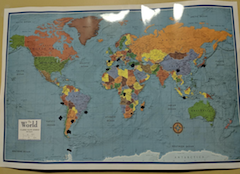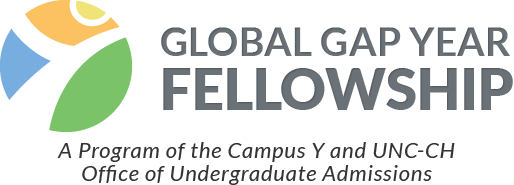
The following post was written by Bridge Year Fellow Karen Xu.
The first time I applied to a gap year program at the end of high school, I was 17. I was too young to apply for UNC’s Global Gap Year Fellowship at the time. So, I applied to Global Citizen Year, I was set to go to Ecuador, and I was more excited than I had ever been. I ended up being unable to go. I remember the excitement being taken from me, the path to a gap year being cut off. But two years later, after going through my freshman and sophomore year of college, here I am, embarking on the gap year that my 17-year-old self dreamed of. In many ways, this year is my second chance at a gap year, a reclaiming of the excitement I first discovered from starting on a gap-year path.
My gap year is called a bridge year, and I believe that the word “bridge” is significant. Perhaps this year is a gap separating two periods of academic study in my college career. But it is also a bridge between these periods. A bridge is a structure that connects one place to another, usually crossing over obstacles, providing a path where there isn’t one. This year will connect my first half of college to the second half. And this year will hopefully help me overcome some obstacles like a waning motivation to be in class and a fear of uncertainty. Embracing uncertainty is not easy, but it’s important for me to keep moving forward and something I hope I can improve on.

Preparation for my bridge year has been filled with uncertainty. Uncertainty about where I would be, what I would do, how I would design this whole year. The placements I had been thinking about always seemed to be in flux. I thought I was going to Peru for the first few months of my bridge year, but now I am headed to San Diego, California and Mexicali, Mexico in just a couple of days. I found my placements in Peru and San Diego through connecting with a local nonprofit, a global health organization based in Durham, NC called Advance Access and Delivery (AA&D).
Over the past few weeks, while I’ve still been in North Carolina, I’ve been working in AA&D’s Durham office, where I’ve learned a great deal about AA&D’s various partner organizations in the United States and around the world. The way their organization is structured truly exemplifies the partnership approach to service: rather than working independently on their own goals and projects, they work to cultivate relationships with existing local organizations and collaborate with them. As a result, all of their projects are sustainable and able to operate self-sufficiently through established local partners.
During the next six months, I’ll be working with one of their partners, the California Department of Public Health’s Office of Binational Border Health (OBBH), where I’ll be doing work on infectious disease surveillance. I’m interested in seeing how political uncertainty in the border region influences the OBBH’s work, and I’m curious to see how the OBBH encourages collaboration between the United States and Mexico on public health issues. The U.S.-Mexico border region is particularly interesting because it’s a liminal space, simultaneously a separator and a connector between the two countries, a transition area in which uncertainty and opportunity coexist–uncertainty over where to belong and an opportunity to make that choice.
Similarly, my bridge year itself is also a liminal space, a transition filled with both uncertainty and opportunity. My bridge year breaks down the certainty of a traditional path, allowing me to take different paths and discover new potentialities. At times, I’ve felt paralyzed by the various paths I can choose. But I’ve realized that sometimes you need to start on a path before you can figure out if it’s a path you want to be on. The liminal space is magical because it allows for opportunities, new paths and directions, a place for reflection. A place to reflect on my past experiences and how they will shape my future experiences. To reflect on how I’ve changed and how I might change during this next year. The liminal space is a place to evolve, adapt and grow.

Our lives are a series of journeys through liminal space: from childhood to adulthood, from cluelessness to understanding. Liminal spaces allow us to break from linearity and find our unique, curving path. We are complex beings who are not meant to travel a linear path, and a line is far too simple to fully capture our journeys through life. I am convinced that it is the journey that counts, that perhaps the journey is the destination I have always been searching for, that the milestones are never as important as the journey and struggles we go through to arrive at those milestones. I am convinced that this bridge year I am about to embark on will be an important journey.
I didn’t think I would get a second chance at a gap year. Moreover, I didn’t think my second chance at a gap year would be between my sophomore and junior year of college. I am taking time away from college for an entire year, inserting a curve in my path right in the middle of my four years. I am creating a new liminal space for myself. I know I’m coming back, but, in the meantime, I am excited to take on the liminal space ahead of me.
